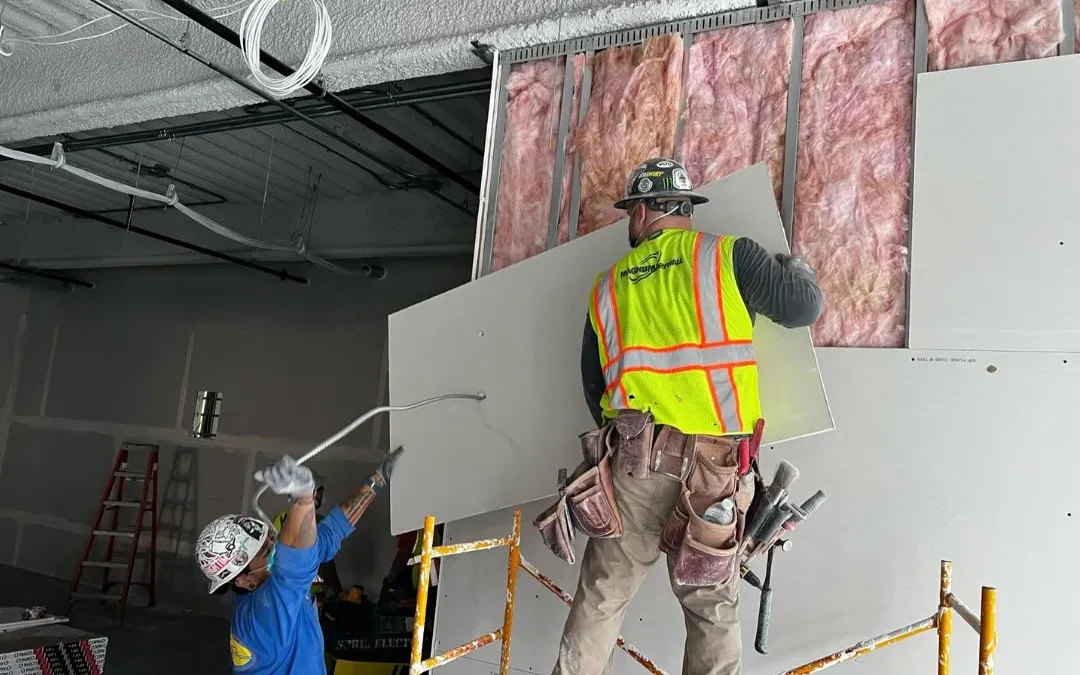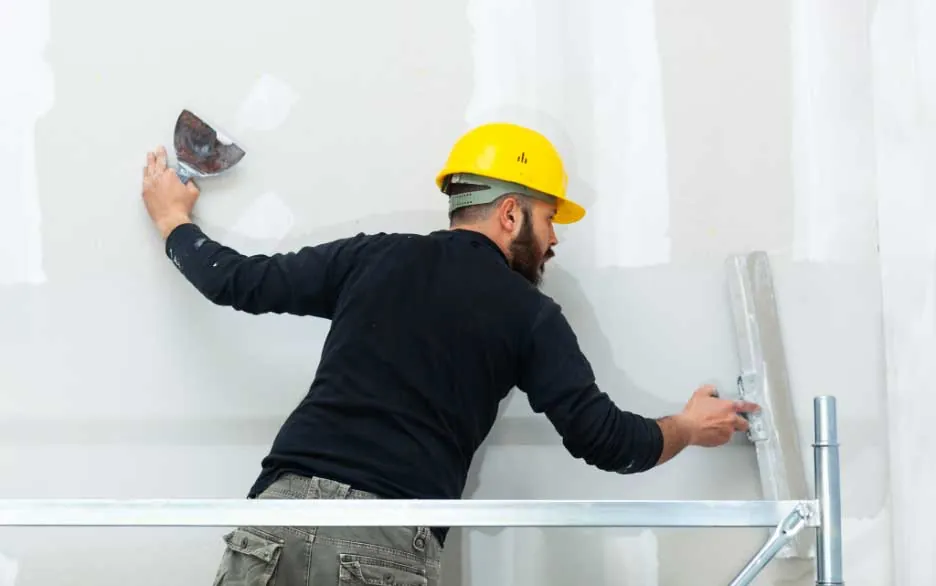Specialist Sheetrock Repair Fort Worth for Quick Fixes
Specialist Sheetrock Repair Fort Worth for Quick Fixes
Blog Article
Drywall Installation Facilitated: Tips for Perfect Outcomes
Drywall setup is usually regarded as a daunting task, yet with the right technique and expertise, it can end up being a workable endeavor. Understanding techniques for reducing, hanging, and ending up drywall can considerably influence the outcome.
Selecting the Right Products
Picking the suitable products for drywall installment is important to attaining a durable and aesthetically pleasing finish. drywall contractor. The main part, drywall sheets, generally been available in numerous thicknesses, with 1/2-inch sheets being conventional for indoor walls. For areas needing extra dampness resistance, such as cooking areas or bathrooms, consider utilizing eco-friendly board or concrete board, which are specifically made to endure humidity

Additionally, selecting the right fasteners-- either screws or nails-- is important for securing the drywall to the framing. Drywall screws are usually preferred for their holding power and minimized danger of standing out. Consider the finishing touches such as guide and paint, which not only enhance the look however also protect the drywall from dampness and wear.
Preparing the Setup Area
Prior to starting the drywall installment process, it is important to prepare the installation location completely. This preparation entails a number of vital steps to ensure a smooth and effective project. Initially, clear the area of any kind of furniture, home appliances, or obstructions that can hinder accessibility. A tidy work space reduces the threat of damage to existing products and enables reliable motion throughout installation.
Following, inspect the walls and ceiling for any kind of blemishes, such as splits, openings, or mold. Address these problems ahead of time; patch any type of problems and allow sufficient time for repair services to completely dry. Additionally, make sure that electric outlets, switches, and plumbing are properly positioned and represented, as this will certainly influence drywall placement.
Consider the environmental conditions. A stable temperature and moisture level are essential for ideal adhesion and performance of the drywall materials. If required, use a dehumidifier or heater to create suitable problems.
Cutting and Hanging Drywall
The key to efficient drywall installation depends on the accurate cutting and hanging of the panels. Begin by measuring the space properly, taking into consideration any type of obstructions such as electrical outlets or home windows. Make use of a straight edge and an utility blade to rack up the drywall along your measurements, then break it along the scored line for a clean break. For more intricate cuts, such as around electrical outlets, a drywall saw can be made use of for precision.

Always function from the top down and delegated right, guaranteeing that you keep a staggered pattern to enhance stability. Effectively hanging the drywall sets the structure for a smooth click here now coating, ultimately causing superior cause your drywall task.
Taping and Mudding Techniques
While appropriate cutting and dangling of drywall sets the stage, the next crucial step entails understanding taping and mudding techniques to make sure a smooth coating. Taping is important for strengthening joints and preventing cracks; it includes installing tape right into the used joint substance (mud) Beginning with a quality fiberglass or paper tape, applying the tape over the joint and pressing it into the damp mud making use of a taping blade, making certain no air bubbles remain.
Once the tape is in place, apply a thin layer of joint compound over the tape, feathering the edges special info to produce a smooth shift to the drywall surface area. Enable this layer to completely dry totally prior to sanding it lightly to eliminate blemishes. Repeat this procedure, using extra coats of mud as needed-- normally a couple of layers-- while slowly broadening the application location with each layer to accomplish a seamless look.
After the final coat dries out, sand the surface area with a fine-grit sandpaper till smooth. drywall repair. Bear in mind to use a mask throughout sanding to avoid breathing in dust bits. Mastering these taping and mudding techniques is crucial for achieving a professional-quality finish in your drywall installment
Ending Up Touches for Excellence
Achieving a remarkable drywall installment exceeds taping and mudding; it culminates in the ending up touches that boost the general appearance. These last actions are critical in making certain a professional-grade coating that improves the visual appeals of your space.
Begin by sanding the dried joint compound to create a smooth surface area. Make use of a fine-grit sandpaper and a sanding block or post sander for ideal control. Pay particular focus to edges and edges, as these areas tend to call for more thorough work. After fining sand, wipe down the wall surfaces with a moist cloth to eliminate any kind of dust bits, ensuring a tidy surface area for painting.
Following, use a guide particularly designed for drywall. This step is essential, as it assists secure the joint compound and supplies a consistent base for the overcoat. When the guide dries, check for any kind of imperfections, and retouch as required.
Conclusion
In verdict, successful drywall installment depends upon the careful choice of products, comprehensive prep work of the installment area, and specific execution of cutting and hanging methods. Proficiency of taping and mudding procedures is important for accomplishing a smooth coating. In addition, attention to ending up touches, consisting of priming and touch-ups, ensures a professional-grade result. By adhering to these guidelines, the high quality of craftsmanship can be learn this here now significantly enhanced, adding to the general visual and capability of the room.
Drywall setup is commonly regarded as a difficult job, yet with the appropriate technique and expertise, it can come to be a convenient venture.Choosing the suitable materials for drywall installation is crucial to achieving a long lasting and visually pleasing surface.Before starting the drywall setup process, it is important to prepare the installation location completely. Grasping these taping and mudding methods is vital for accomplishing a professional-quality coating in your drywall setup.
In conclusion, effective drywall setup pivots on the cautious choice of materials, comprehensive prep work of the setup area, and specific execution of reducing and hanging methods.
Report this page